Lemons, limes, citrons, oranges, grapefruit, yuzu, tangerines, pomelos…
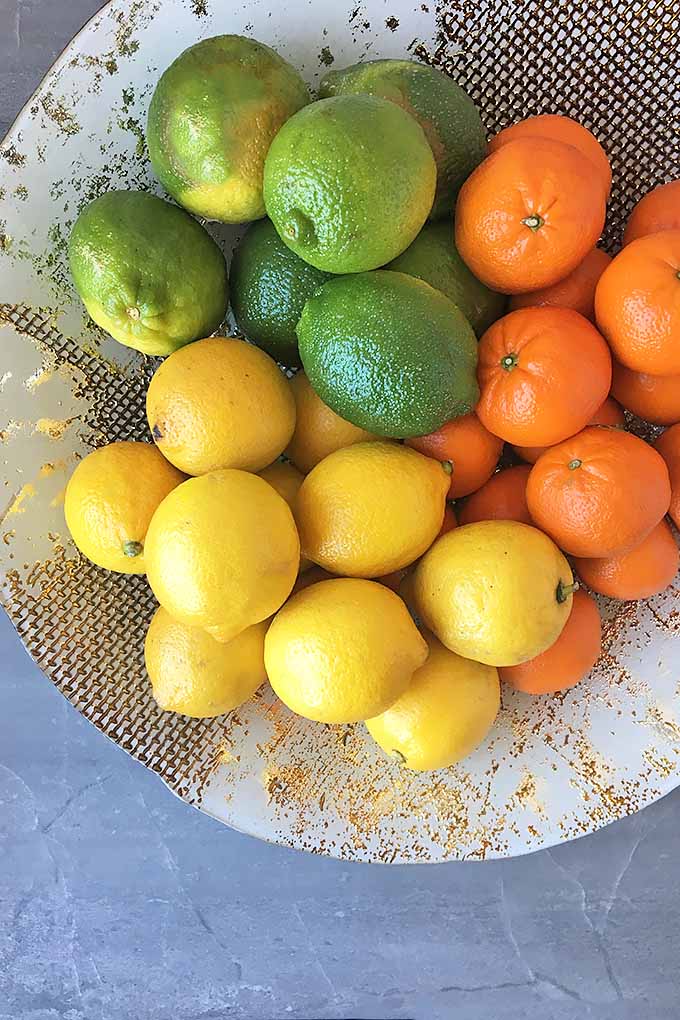
The colorful world of citrus fruits is filled with so much variety!
And it’s bursting with a wild medley of bright flavors, powerful acidity, subtle sweetness, dynamic sourness, and unforgettable freshness.
But before making your favorite marmalade, or whipping up a batch of lemon bars, you should know how to store these lip-puckering ingredients, to keep them at their best and brightest.
Keep reading to learn all you need to know to choose, store, and use these bright flavor bombs of awesomeness.
Selection
While the real goodness lies underneath the skin, hidden from view when shopping for your groceries, there are a few things to look out for on the outside to determine the best pickings:
The skin should not look shriveled, blackened, or moldy – all signs that it is no longer fresh. Look for plump, bright skin with minimal blemishes.
A few shallow scratches and other blemishes here and there are totally fine – the juicy flesh underneath will still be unharmed.
And don’t forget to squeeze before buying!

To get the greatest amount of juice, you want to choose a fruit whose albedo (that white, spongy layer directly underneath the skin) is fairly thin.
You’ll still feel a small amount of resistance from the albedo, also known as the mesocarp or pitch, but you should be able to feel the juicy flesh underneath when you squeeze lightly. This means that the flesh is at its fullest capacity, and will be bursting with juice when you prep it.
If the albedo feels very thick and questionably firm, the fruit was picked from the tree prematurely. Since the flesh did not get enough time to develop fully, it will not yield as much juice.
The only possible exception to this is the pomelo, since it it known for its very thin layer of pith. But the texture should still be there if you’re choosing a good specimen. Other types of citrus, like mandarins, have hardly any mescarp beneath the skin at all.
Storage Methods
Lucky for all of us, the peel and albedo of citrus fruits provide a protective barrier that makes storage super easy and versatile.
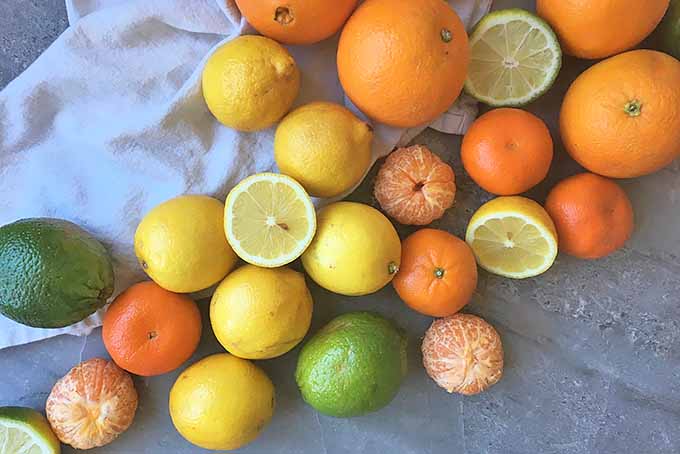
Citrus fruits are not as perishable as some of the more delicate types of produce, like fresh berries. And since they are non-climacteric, meaning they don’t produce ethylene as they ripen (like bananas, melons, and apples), they retain their quality for a longer period of time after they are harvested.
So, you have your share of storage techniques to choose, depending on when and how you will be using them:
Room Temperature
Love the presentation of a gorgeous centerpiece on your table? Keeping a beautiful bowl of citrus fruit at room temperature is fine, as long as you keep them whole and do not cut into them.
Just understand that storing at room temperature will hasten the ripening process in comparison to refrigeration, especially if you are piling everything on top of one another in a small bowl, where air circulation is severely diminished.
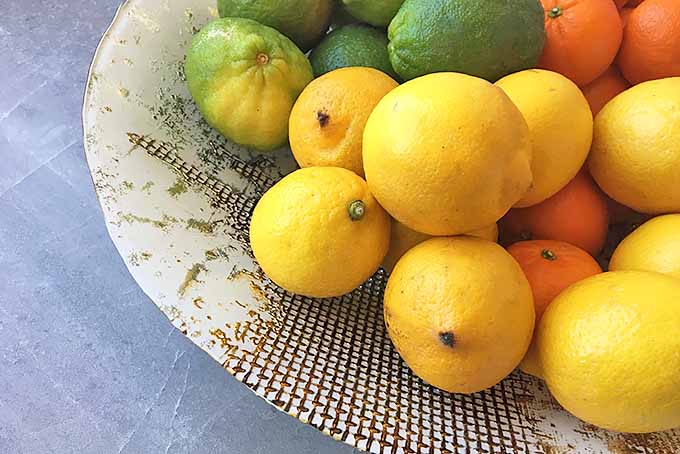
Since ripening (and possible over ripening) will happen more quickly, this method is best when you are planning to use citrus fruits within a week after purchasing.
We also recommend prepping any citrus fruit at room temperature, especially if you plan on juicing. The juice is released more easily at room temperature than when it is cold, as the juice cells that make up the flesh become more relaxed.
You will also get the most flavor when consuming a room temp citrus, though many (including myself) prefer to enjoy the cool, refreshing taste of a chilled orange. This all depends on your own taste preferences.
Refrigeration
For storage that will last longer than just a week, refrigeration will be the best method.
Store all whole citrus in the fruit crisper drawer of your refrigerator, out of any plastic bags. They will last for a couple weeks when stored in this manner.
Do not leave the fruit out on any of the open refrigerator shelves. This decreases how long they will last when stored in the fridge, as they will constantly be exposed to air without any protection, as you would get in the fruit crisper drawer.
We do not recommend using regular plastic bags for fridge storage. The tight, enclosed space will increase the potential for mold growth and ripening.

Instead, you could use breathable produce bags to help the fruit to get the right amount of moisture and air absorption while it’s being stored in the refrigerator.
Don’t wash them beforehand – again, any excess moisture will attract potential mold growth. We recommend washing them right before prepping.
Once cut, citrus absolutely must be refrigerated, as it becomes highly perishable once the outer barrier has been damaged.
If you are hoping to meal prep for the week, you can absolutely plan ahead. Zest the peel, or cut each citrus into segments. Store them in the fridge in airtight containers or bags for up to a week.
Freezing
The whole fruit is not suitable for freezing. The extreme cold doesn’t bode well for storing a whole tropical fruit! This method for long-term storage is best applied to the individual parts.
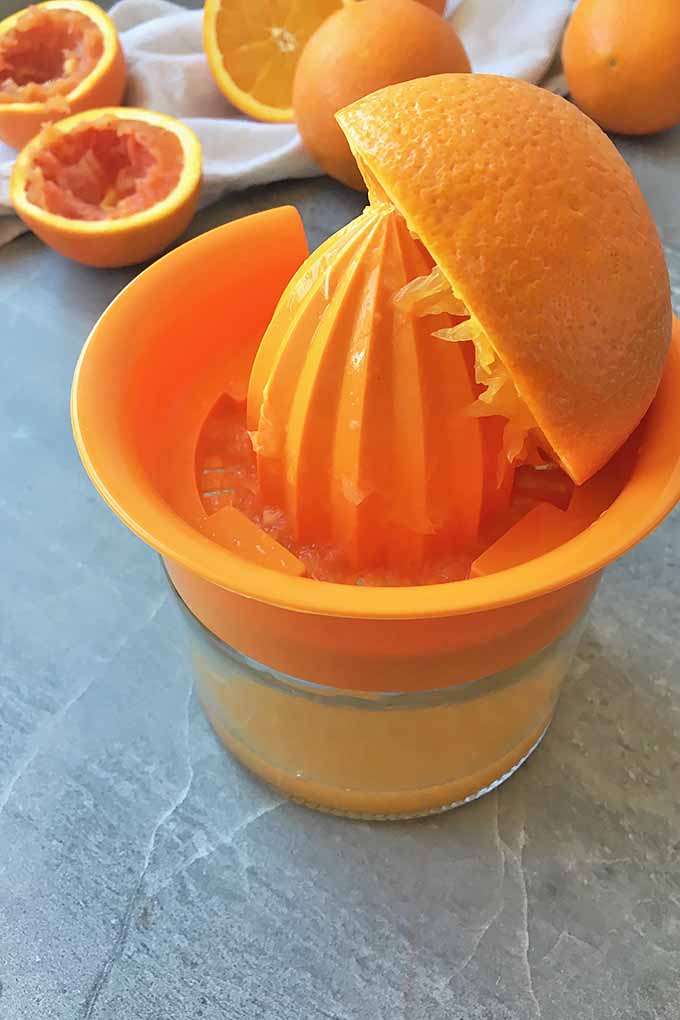
Freeze the juice or zest of any of your favorite citrus in ice cube trays. Once frozen, transfer to an airtight container and keep in your fridge.
When ready to use, gently defrost the zest in the fridge or at room temperature. For the juice, you can directly add the cubes to smoothies for a splash of bright flavor.
How to Use Them
Oh, the endless possibilities with just one kind of fruit!
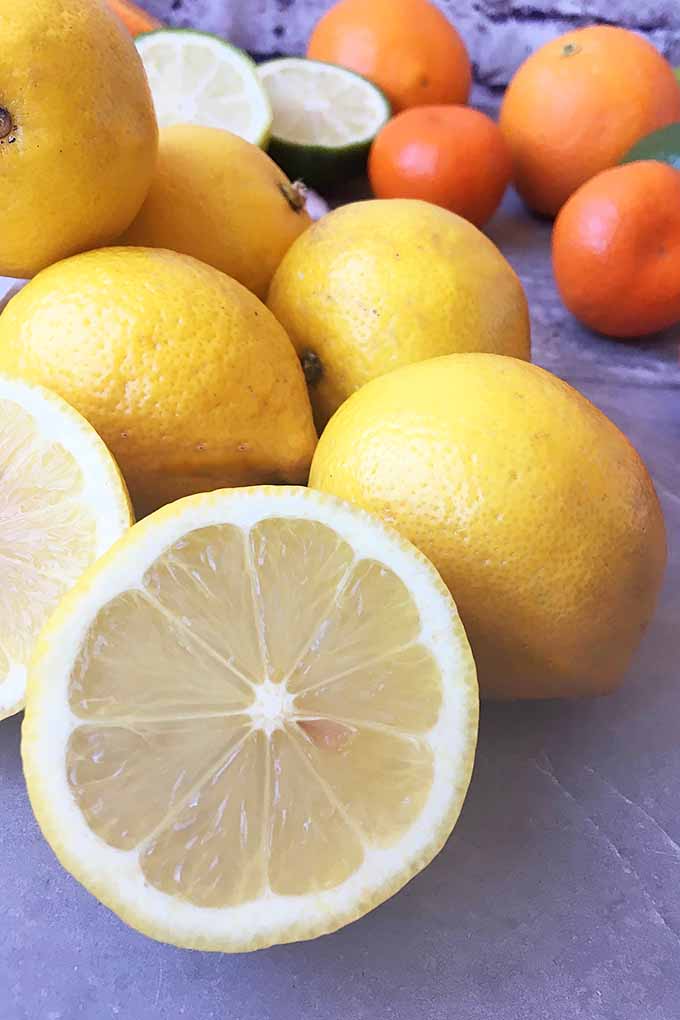
Beyond adding them to tasty recipes (see them all below!) citrus fruit can be used for a variety of medicinal and cleaning needs as well.
The anti-inflammatory quality of citrus fruits makes them ideal as natural remedies. Steep a slice or two of your favorite citrus for a hot, therapeutic tea, or dilute lemon juice in water to apply as a disinfectant to minor wounds.
Lemon juice can also be used as a naturally potent and inexpensive household cleaner. The strong acidity provides antibacterial properties and a powerful cleaning element – perfect when you need to clean and disinfect your bathroom, kitchen, and more.
Delicious Recipes
Pleasingly Peppy Peel
The peel is a wondrous source of intense, condensed citrus flavor. This peel includes aromatic oil glands that are released when cut.
Use a microplane or zester to zest the peel when you are ready to prepare your recipe, and add it to any number of recipes to perk up the flavor. Try a teaspoon or two of fresh lemon zest in your favorite vinaigrette, or mix it with roasted vegetables.

You’ll love the orange zest flavor in our recipes for cranberry upside-down cake, super moist orange pound cake, and double chocolate orange cookies.
And for a holiday classic, learn how to make homemade candied citrus peel – we’ll teach you three ways: sweet, sour, and covered in decadent dark chocolate.
Jammin’ Juice
We love a good squeeze of lemon juice right on top of freshly cooked seafood, or to top off tacos and guacamole with a little bit of lime.

And of course, what could be better than sipping on a cup of freshly squeezed orange juice first thing in the morning?
Well, on second thought, fresh mojitos with lime juice and blackberry lemon cocktails serve up some pretty tasty competition come happy hour…

And if you like to bake, you can use the juice in so many sweets, like in our recipe for gluten-free mandarin orange sponge cake. Or serve on the sweets with our homemade coconut sugar lemon curd!
Sensational Segments
While there is something so sweet, simple, and satisfying about enjoying a fresh orange all on its own, you can also use the segments in many creative ways for your next dish.
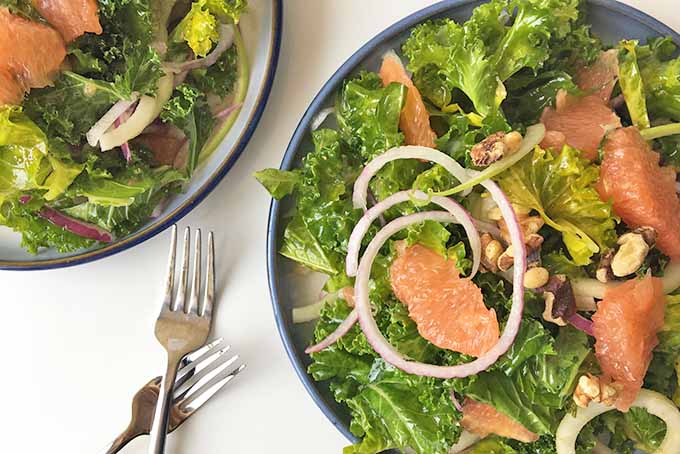
Our bright kale salad with apples and red onion also features grapefruit segments, for the perfect amount of freshness and bitterness.
And for dessert? Try our milk chocolate panna cotta, topped with salted pistachios and blood orange segments.
Savor Our Sweet-Tart Advice
With such a powerfully protective exterior, citrus fruits are the most forgiving of produce to store for a longer period of time. But don’t let that tough barrier fool you…
Underneath, every lemon, lime, tangelo, and grapefruit all have something beautiful to offer: a medley of bold flavors, luscious juices, and endless options on how to enjoy them!
Be sure to follow our advice on keeping them at their best for however you need them – you’ll be enjoying these sweet-tart treats nonstop.

Craving even more lip-puckering recipes?
Try a refreshing (and boozy!) citrus whiskey tea punch from Vintage Kitty, or a dairy-free sweet lemon curd from Hunger Thirst Play. For something on the savory side, try chicken skewers with meyer lemon salsa from The Gingered Whisk, or pan-seared endive with white wine orange reduction from The Fitchen.
What are your favorite recipes using citrus? Do you have any of your own tips and tricks for storage that you love? Give us the sweet-tart details in the comments below!
Don’t forget to Pin It!
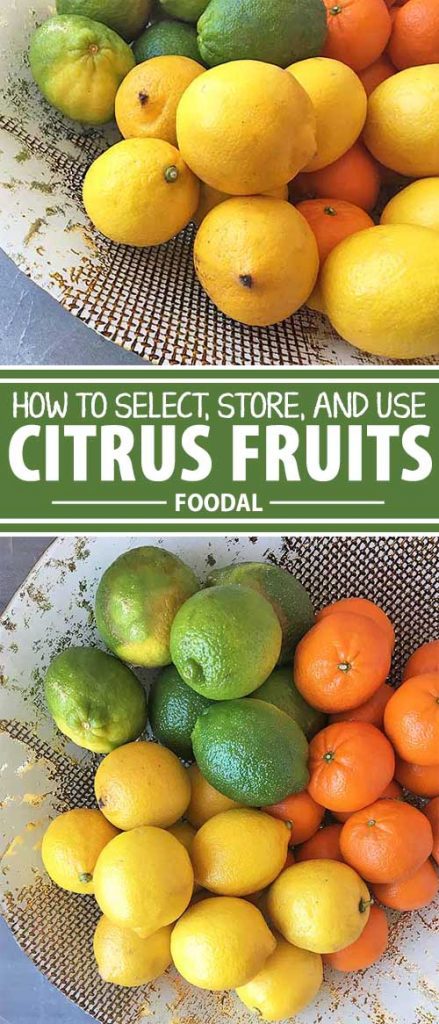
Photo credit: Credited photos by Nikki Cervone, Felicia Lim, and Kendall Vanderslice, © Ask the Experts, LLC. ALL RIGHTS RESERVED. See our TOS for more details.
The staff at Foodal are not medical professionals and this article should not be construed as medical advice. Foodal and Ask the Experts, LLC assume no liability for the use or misuse of the material presented above. Always consult with a medical professional before changing your diet, or using supplements or manufactured or natural medications.
About Nikki Cervone
Nikki Cervone is an ACS Certified Cheese Professional and cheesemonger living in Pittsburgh. Nikki holds an AAS in baking/pastry from Westmoreland County Community College, a BA in Communications from Duquesne University, and an MLA in Gastronomy from Boston University. When she's not nibbling on her favorite cheeses or testing a batch of cupcakes, Nikki enjoys a healthy dose of yoga, wine, hiking, singing in the shower, and chocolate. Lots of chocolate.


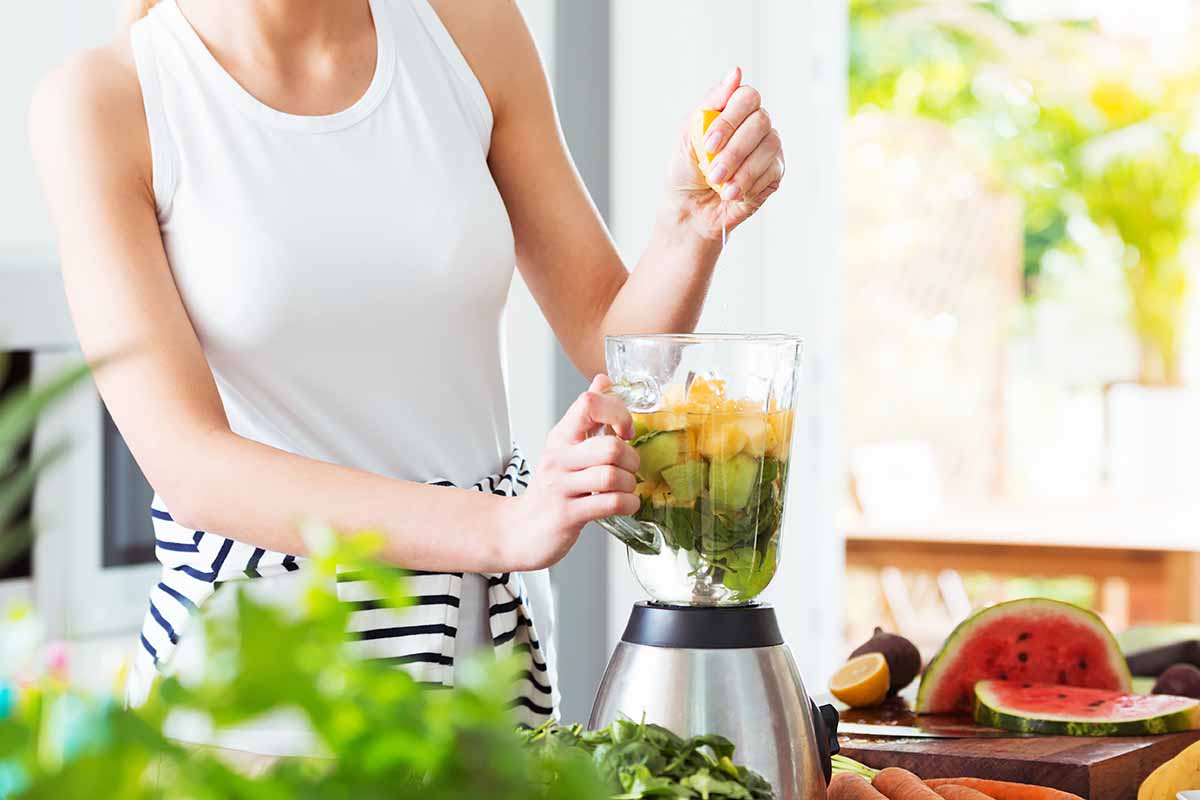

Love those pictures of all the citrus! I must get refrigerator bags!